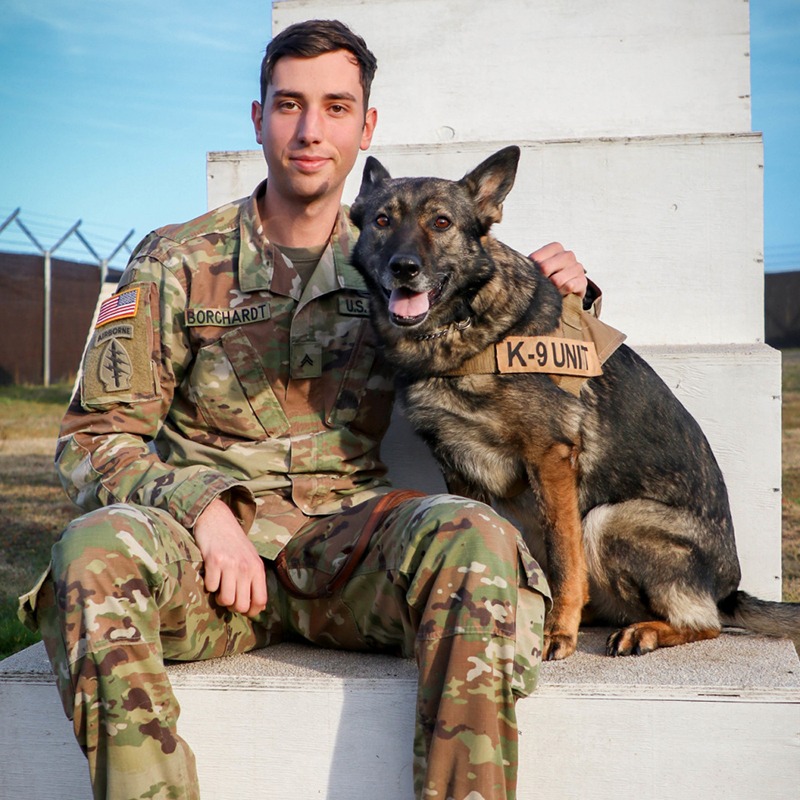Silent Sentinels: A Deep Dive into the World of Military Working Dogs
In the world of defense and security, heroes wear many uniforms — some come with fur, paws, and a tail that wags at the sound of their handler’s voice.
6/11/20255 min read


In the world of defense and security, heroes wear many uniforms — some come with fur, paws, and a tail that wags at the sound of their handler’s voice. Military working dogs (MWDs) have been indispensable partners on battlefields and in peacekeeping missions for centuries. Their courage, intelligence, and loyalty continue to save lives and provide an unmatched edge in critical operations around the globe.
In this comprehensive article, we honor these remarkable canines by exploring their origins, the depth of their training, their daily challenges, and the unbreakable bond they share with the soldiers they protect. We also reflect on why, at Zestlet, we hold ourselves to the same high standards of performance, reliability, and trust that these dogs embody every day.
1. A History Written in Paw Prints
Dogs have walked alongside soldiers since ancient times. Historical records show that as early as 600 BC, armies in Asia and Europe trained dogs for combat and sentry duty. By World War I and II, the roles of military dogs evolved dramatically — they served as messengers, ambulance dogs, and sentinels guarding camps from intruders.
One notable story is that of Chips, a German Shepherd–Collie–Siberian Husky mix, who served during World War II. Chips broke away from his handler during a beach landing in Sicily, attacked a hidden enemy machine gun nest, and forced its crew to surrender. He was later awarded the Silver Star for bravery, reminding the world that canine courage knows no boundaries.
2. Modern Roles: The Many Hats of Military Dogs
Today, military working dogs fill roles that no technology can fully replace. Their noses are more sensitive than any human-made sensor, their agility and instinct surpass mechanical devices, and their ability to bond with humans makes them irreplaceable team members. Common specializations include:
• Explosive Detection: One of the most critical tasks — sniffing out IEDs and hidden explosives, saving countless lives on patrols and during security sweeps.
• Tracking and Patrol: MWDs track enemy movements, locate hidden threats, and help secure perimeters.
• Search and Rescue: After natural disasters or combat, dogs locate trapped or wounded soldiers and civilians faster than machines or human teams.
• Combat and Attack: Some dogs are trained to neutralize threats directly, providing both a deterrent and active defense in conflict zones.
Breeds like the Belgian Malinois, German Shepherd, and Labrador Retriever dominate these roles thanks to their intelligence, strength, and adaptability to challenging environments.
3. From Puppy to Protector: The Rigorous Training Process
The journey from a playful puppy to a mission-ready military working dog is intense and highly structured. Training can last 12 to 24 months and usually unfolds in several stages:
a) Selection and Early Socialization
Potential MWDs are carefully bred for desirable traits: intelligence, strong drive, calm nerves, and physical fitness. As puppies, they’re exposed to varied sights, sounds, and environments to build confidence.
b) Basic Obedience
Before any specialized tasks, dogs must master perfect obedience. This includes instant recall, walking without pulling, and responding to both hand signals and voice commands under distractions — a foundation crucial for safety in combat zones.
c) Specialized Skills
After obedience comes advanced training in their designated role. For explosive detection dogs, this means countless hours sniffing out a variety of chemicals and practicing real-world search scenarios. Patrol dogs learn controlled aggression, how to protect their handler, and how to apprehend a suspect without unnecessary force.
d) Realistic Simulations
Before deployment, dogs and their handlers undergo simulations mimicking the chaos of the battlefield: gunfire, crowds, vehicles, and sudden threats. This ensures the dog remains calm and obedient under high stress.
Only about half of all candidates make it to full active service — a testament to the demanding nature of the work.
4. The Handler: More Than a Trainer — A Lifeline
Ask any soldier who’s served with a military working dog, and you’ll hear about a bond deeper than words can express. The handler is more than a trainer; they are the dog’s protector, caregiver, and trusted partner.
Handlers learn to read subtle cues — a flick of the tail or a slight pause can signal a buried IED or hidden enemy. They also provide daily care: feeding, grooming, play, and medical attention. This constant companionship creates a relationship built on mutual trust and unshakeable loyalty.
Handlers often say that their dog’s presence offers emotional stability and comfort in the most hostile environments — a reminder of normalcy and unconditional friendship amid conflict.
5. Stories of Courage: Real Heroes on Four Paws
One well-known modern hero is Cairo, a Belgian Malinois who was part of the Navy SEAL Team that conducted the raid on Osama Bin Laden’s compound in 2011. Cairo’s role included securing the perimeter and detecting hidden threats, proving that even the most elite human teams trust canine instincts above high-tech alternatives.
Another example is Lucca, a German Shepherd–Belgian Malinois mix who served with the US Marines. Over six years and more than 400 missions, Lucca never lost a single human life under her watch. She did, however, lose a leg while detecting an IED — but survived and retired with full honors, living out her days with her handler’s family.
These stories illustrate the silent courage and sacrifice that military dogs contribute daily, often without recognition.
6. Life After Service: Retirement and Care
After years of loyal service, most military dogs retire around age 8 to 10. Thanks to advocacy groups and changing military policies, retired dogs are now typically adopted by their handlers whenever possible — a fitting end for a lifetime of loyalty.
Veterinary care, comfortable living, and plenty of affection are essential to reward these dogs for their dedication. Organizations worldwide also help place retired MWDs with loving families, ensuring they live their golden years in peace.
7. How Zestlet Draws Inspiration from Military Working Dogs
At Zestlet, we see these canine heroes as the ultimate symbol of trust and performance. Their example motivates us to design tactical uniforms and gear that live up to the same standards of reliability and resilience.
Our tactical apparel is engineered to withstand demanding conditions — durable stitching, high-performance fabrics, and ergonomic designs ensure that handlers and soldiers can focus fully on the mission, knowing their equipment won’t fail them.
When you choose Zestlet, you choose a commitment to quality and functionality that honors the same dedication military dogs show every day.
8. A Salute to the Future
As threats evolve, so too does the role of military working dogs. From advanced scent detection to possible uses in cyber defense, researchers continue to explore how these remarkable animals can tackle modern security challenges.
No matter how technology advances, the loyalty, courage, and partnership of a well-trained military dog will remain irreplaceable. At Zestlet, we remain committed to supporting the heroes — human and canine — who protect our world.
9. Share Your Story
Do you have an experience with a military working dog, or thoughts about these amazing partners? We invite you to share your story in the comments below or connect with us. Together, we can spread appreciation for these silent sentinels who stand guard so the rest of us can live in peace.




